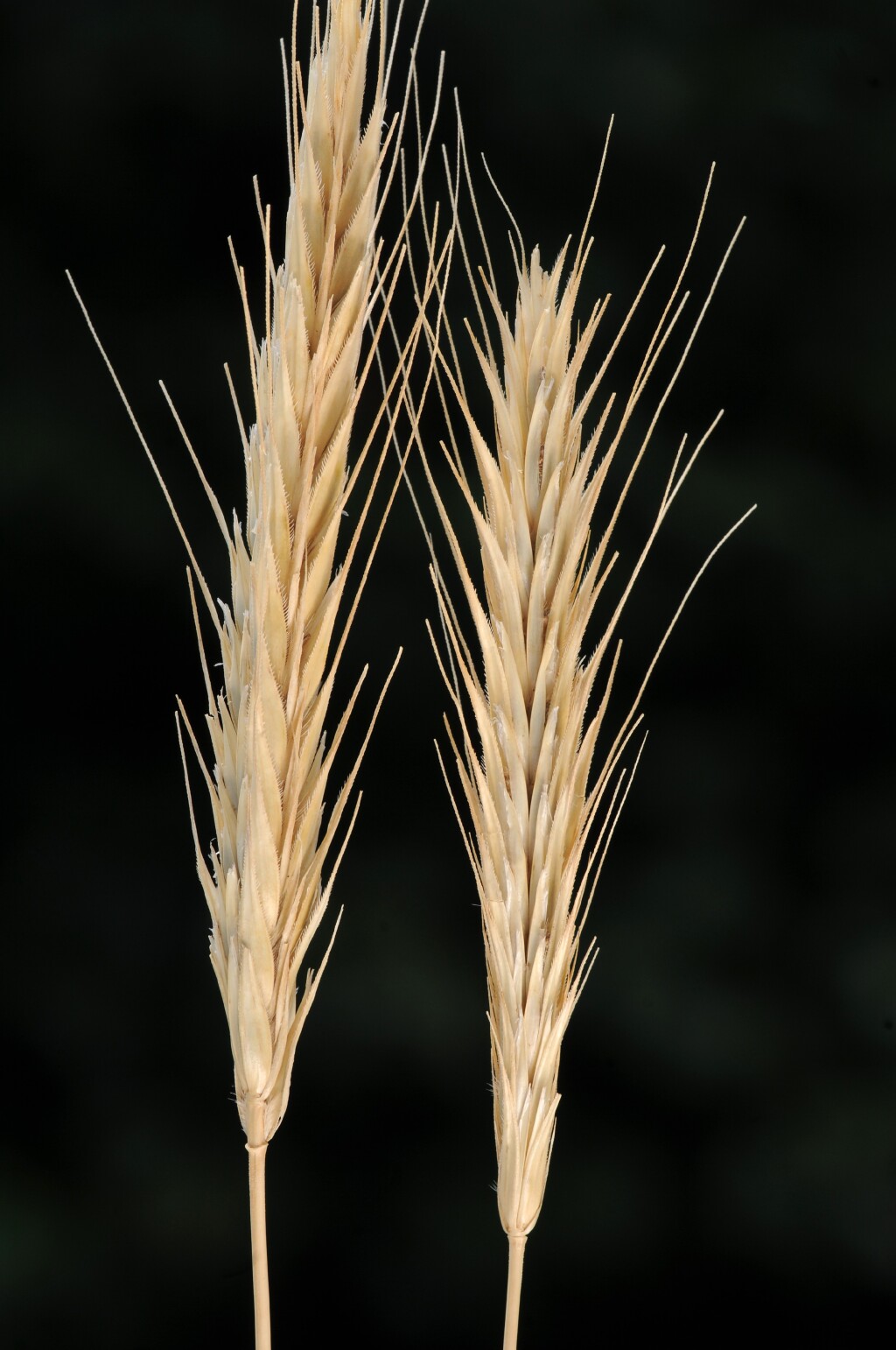Secale cereale
L. RyeSlender, erect annual to 1.5 m high, culms pubescent below the inflorescence. Leaves glabrous, smooth to finely scabrous; blade flat, 10–25 cm long, 3–10 mm wide; ligule truncate, membranous, 1–2 mm long; falcate auricles sometimes developed. Inflorescence a dense spike, 5–15 cm long (excluding awns), usually drooping at maturity; rachis silky-hairy along lateral angles. Spikelets 12–25 mm long (excluding awns), with 2 equal, opposed florets; glumes equal, subulate, 6–12 mm long, strongly keeled; lemma lanceolate, 7–15 mm long, scabrous-ciliate along keel and margins, evenly tapered to the 2–5 cm long, scabrous awn; palea subequal to body of lemma. Flowers Aug.–Sep.
LoM, MuM, Wim, VVP, GipP, OtP, Gold, CVU, GGr, NIS, HSF. Observed in Victoria chiefly in the north-west where cultivated for green fodder and grain, but likely to appear wherever grain is spilt (e.g. vicinity of stock or grain-handling yards).
An intergeneric hybrid between S. cereale and Triticum aestivum, known as 'Triticale', is becoming valued as a crop in the western part of the State. It appears to be more resistant to fungal disease than wheat and its yields are comparable to that crop.
Walsh, N.G. (1994). Poaceae. In: Walsh, N.G.; Entwisle, T.J., Flora of Victoria Vol. 2, Ferns and Allied Plants, Conifers and Monocotyledons, pp. 356–627. Inkata Press, Melbourne.
 Spinning
Spinning




